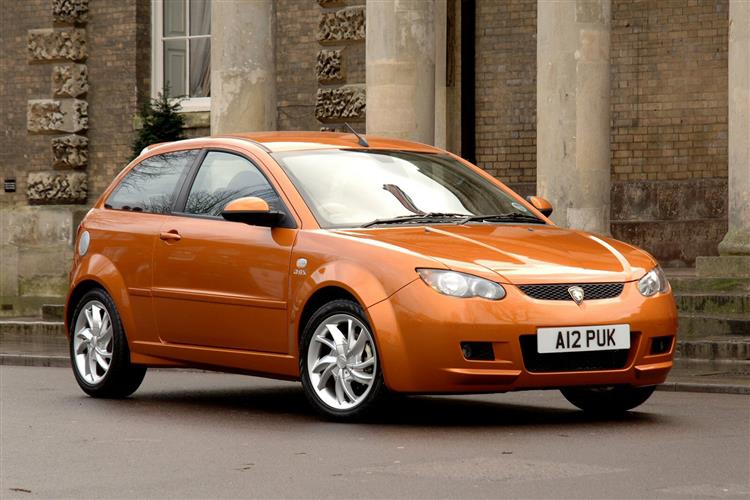SURPRISE! IT'S A SATRIA (some text hidden) --NONE--
BY JONATHAN CROUCH
Introductionword count: 125
For quite a while through the 90s and the early years of the 21st century, superminis seemed to be getting bigger with every successive generation. With this extra size, they were also able to grow safer, better equipped, more comfortable and more practical. It sounds great but while we were driving around in these small cars that felt like big ones, there was often the nagging suspicion that something had been lost along the way. Launched in 2007, Proton's Satria Neo was behind the times in many respects but it did have the old-school fun factor and raw driver appeal which many of its better-known supermini rivals had sacrificed in the name of progress. So, does it make sense as a left-field used car buy?
Modelsword count: 9
3 door supermini, 1.3, 1.6 petrol [SX, GSX, Sport]
Historyword count: 229
British sportscar manufacturer Lotus cars was swallowed up by Proton way back in 1997. It was a smart move in many ways. Lotus was floundering financially and it was thought that the brand equity would add significant clout to a Proton badge that was desperate for global credibility. It wasn't long before Lotus expertise was being put to work in developing the driving characteristics of Proton products. The Satria GTi of 2000 was a decent effort and when the all-new Satria Neo emerged in 2007, hopes were high that this affordable supermini would have more than a sprinkling of the Lotus magic. Proton wasn't shy about promoting its links to Lotus and it even went so far as to install a shiny black plaque in the left hand corner of the Satria Neo's tailgate bearing the legend 'Handling By Lotus'. Anyone expecting an engine with the clout to live with legendary Lotus models like the Esprit or the Elise was in for a disappointment though. The Satria Neo came only with 1.3-litre or 1.6-litre normally-aspirated petrol units (though the 1.3-litre unit was quickly dropped). At least there was scope for some 16” alloys and a rear spoiler on the top spec GSX models, but the entry-level SX looked comparatively run of the mill. The car sold until the Proton brand was quietly deleted from the UK market in 2012.
What You Getword count: 566
If the Satria Neo is a supermini with sportscar pretensions, it's certainly got the styling element taped, with a low stance and narrow coupe-like glass house. The best view has got to be straight down the nose, the one you see as the Neo crops up in your rear view on a twisty back road. Here, the beady headlamp clusters and letter box grille show real menace, ably assisted by the flared wheelarches and the large central air-intake in the under bumper. This is one of the better-looking superminis, no question, but the clean aggression in the basic shape is let down slightly by some off key detailing. The curvy-spoked alloy wheel design on the GSX cars looks fussy and if people want one of those fake aluminium racing fuel filler caps on their car, they can buy one for £10 from Halfords. The modest roof spoiler on the GSX is just about acceptable, though the other add-ons look very aftermarket and could have easily been replaced with smarter items. Inside though, is where you'd really expect the Satria Neo to stumble a bit. Prior to this car's launch, it often seemed that Proton was single-handily keeping the world's flimsy grey plastic industry afloat, but more recent models did show promise. Sure enough, extra effort was put in with the Neo and there are some very nice touches. Unfortunately though, too many of the materials look and feel sub-standard and the dreaded elephant grey colour scheme is very much in evidence. The fascia is neatly sculpted with the rather uninteresting dials housed in a binnacle that bulges upwards not once but twice, coming dangerously close to resembling a pair of those Mickey Mouse ears in the process. The display illuminates blue when the lights are on, making everything far more interesting on the eye. The highlight of the interior has to be the neat centre console with the vertically-stacked ventilation controls and the large square buttons below a tastefully integrated CD stereo. The small cubby holes on either side are oddly shaped and don't do a great job of hanging on to keys or loose change, but a wallet seems to wedge in there quite nicely, provided you're not too flush with cash at the time. The quality of materials here is quite impressive with some nice finishes used but the centre section must have accounted for more than its fair share of the budget. The fake Allen key bolts seen on the fuel filler cap crop up again on the steering wheel, the air vents and the gear lever surround, to questionable effect. The driving position is reasonable, with the firm seatbacks and side bolsters giving good support. The roof is low, however, and anyone much over six feet tall or with a voluminous hairdo will wish that the seat dropped a lot more than it does. The rear bench is really only a two person affair and dignified access to it is only really available from the passenger's side. Although the driver's seat tilts forward, it doesn't slide, so you've got to be pretty lithe to squeeze yourself in via this route. Once you're in the back, the floor seems high and the ceiling low, so it's not as spacious as most superminis of this era but the Satria Neo is smaller and lighter than such cars and this pays dividends on the road.
To see the full road test text contact us on 0330 0020 227
Pictures (high res disabled)

.jpg)
|
.jpg)
|
.jpg)
|



